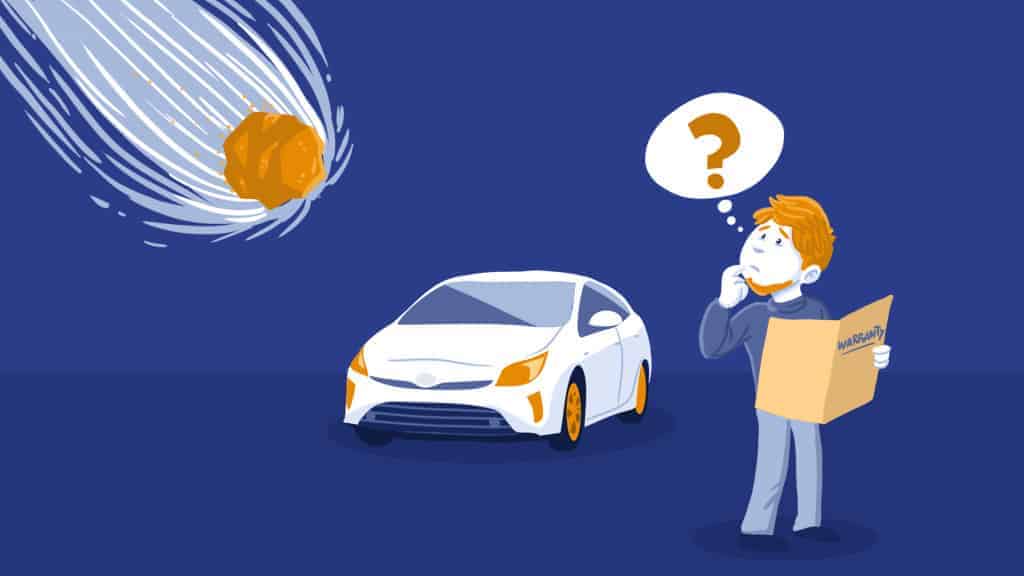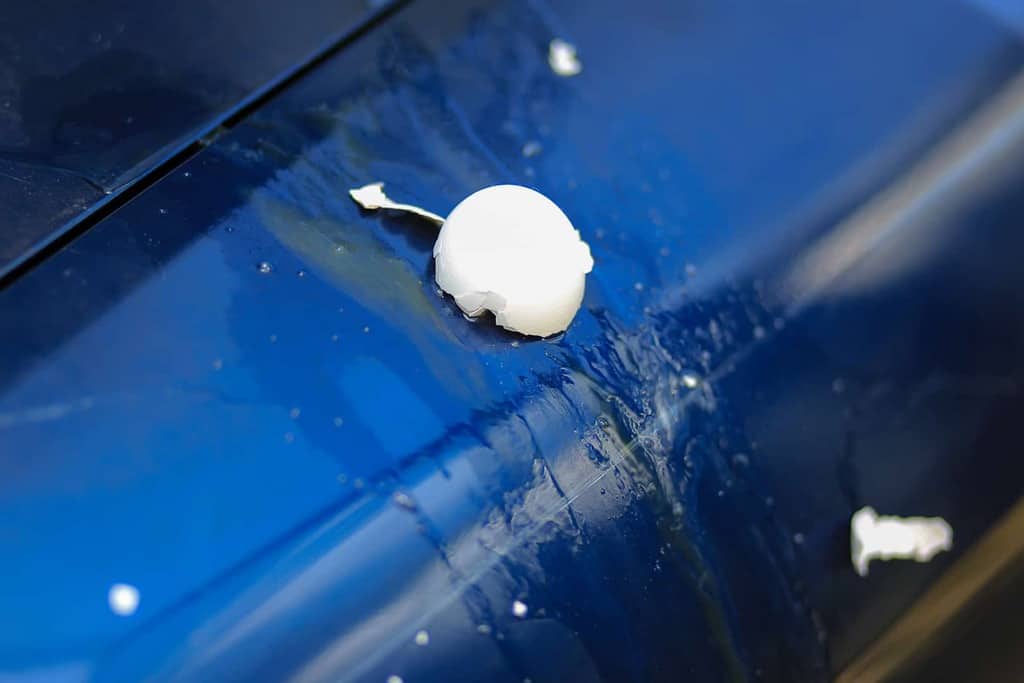Custom fabrication is the enemy of automotive manufactures. The act of taking what the factory provided and enhancing it for superior performance has pissed off car builders for decades. As a result, those who make and sell cars, trucks, and SUVs have continued to expand the range of items that would void a manufacturer’s warranty.
Applying a DIY or professional-grade ceramic coating isn’t one of them. Well, sort of.
It’s a question we get quite often by prospective customers.
But in all honesty, each automotive manufacturer has unique requirements, legal definitions, and standards that apply to each component that is covered under a manufacturing warranty. As such, it’s impossible to provide a yes or no answer to this question.
However, we can discuss a few examples where DIY enhancements can void manufacturing warranties.
In today’s AvalonKing blog, we’ll dive into some of the factors that impact manufacturing paint warranties, what areas of your car are typically covered, and how you can use a high-quality DIY nano-ceramic coating to extend the lifespan and quality of your vehicle’s exterior for years.
Why Might a Ceramic Car Coat Void a Manufacturer Warranty?
Before we explore the answer, it’s crucial to explain what is covered by automakers under standard warranties. Essentially, there are three primary warranties covered by most US automakers:
Bumper-to-Bumper Warranty

The basic bumper-to-bumper warranty is the most inclusive program offered by vehicle manufacturers. It’s known as an exclusionary warranty, simply because it only covers certain sections or systems of the vehicle. The typical bumper-to-bumper warranty will last 3-years or 36,000 miles (whichever comes first).
Bumper-to-Bumper warranties may include:
- All major vehicle systems
- Air conditioning and heating (compressor, condenser, evaporator, etc.)
- Electrical components (power windows, doors locks, sunroofs, etc.)
- Steering (rack and pinion, power steering pump, power steering hoses, etc.)
- Safety features (airbags, seat belts, etc.)
- High tech systems (cameras, GPS, etc.)
The Powertrain Warranty

The next level of warranty coverage for new cars, trucks, and SUVs is the powertrain warranty. But what exactly is a powertrain? Well, this term refers to the components that create the “power” that is distributed to the wheels. While each vehicle is unique, and the configuration and part-names might be different, this warranty typically covers:
- The Engine and Internal Components
- Transmission
- Axles
- Drive Shaft(s)
- Gaskets
- Seals
- Transfer Case
Several manufacturers extend their powertrain warranty longer than the bumper-to-bumper. Most of them are 5-years or 60,000 miles and some can last up to 100,000 or 10-years. Car dealerships will always try to upsell you on extended warranty coverage, but it’s important to read the fine print on what is covered, and what may void these warranties.
Corrosion Warranty

The final warranty is one that applies to this article specifically. It’s known as the corrosion warranty and will cover the cost of repairing corrosion or rust that develops on your vehicle due to accidents, water, salt, and other environmental factors.
Here is the problem – every manufacturer has unique standards and requirements that apply to the coverage. However, in the research I completed for this article, I couldn’t find any US automaker that indicated that applying a nanoceramic coating would void the corrosion warranty.
Items Not Covered in Any Car Warranty
So – we’ve outlined the areas that are covered – but what isn’t?
Generally, each automaker will not cover items that are designed to wear or require routine replacement or maintenance. Some of these areas include tires, brakes, oil and filters, clutch, headlight bulbs, windshield wipers, interior damage, dings and scratches in the paint, or damage caused by negligence or accidents.
It is vital to read any fine print in the warranty paperwork, or simply ask specific details at the dealership, before leaving with your new ride.
What May Void a Car Warranty?
In most cases, the main source of a voided warranty is negligence. Whether it’s driving the car aggressively, not following recommended service, or refusing to comply with safety laws, a vehicle manufacturer may void a warranty for virtually any reason.
With paint and clear coats, it’s nearly impossible to determine what may void corrosion or bumper-to-bumper warranty. This is simply due to the range of dealer-specific terms and conditions. This is a big reason why it’s crucial to verify with your manufacturer what DIY solutions will not impact your warranty.
In What Cases Can a Ceramic Coating Void a Warranty?

As we indicated above, it’s just not possible to clearly answer this question. In the research I completed, (which included reading hundreds of pages of fine print), I could not find a single manufacturer that indicated where the application of a ceramic coating on the paint surface would void a warranty.
The only thing I could think might void any warranty would be with the powertrain. If a car owner were to apply a ceramic coating to their brake calipers for example, and some of the coatings became infused on the brake rotors or pads, this would likely impact the performance and operation of the brakes.
It’s recommended to remove brake calipers and apply the ceramic coating with them off the vehicle. Once they have dried, reinstall, to avoid having any coating find a home on rotors and pads.
How to Apply a Ceramic Coating Without Impacting Vehicle Warranties
The example we outlined above is a great one to consider when applying your DIY nanoceramic coating. There are some moving parts that are covered with a manufacturer’s warranty. If the coating is applied to that surface, it may impact the operation of the part or vehicle system.
To avoid any possible warranty issues, it’s a good idea to follow these steps for applying a DIY ceramic coating like Armor Shield IX.
Step One – Prep Work Matters
The major issue that may impact a manufacturer’s warranty is if ceramic coating finds its way into an area that might be impacted. As indicated above, brakes or other moving parts that are a part of the drivetrain are specific areas of concern.
To avoid this potential, consider spending additional time prepping for the DIY ceramic coating application. Here are a few tips to consider.

Protect Exposable Parts: If you’re going to apply a ceramic coating to your wheels, brake calipers, or engine parts, make sure to cover any exposed parts with painter tape or masking paper.
Be Cautious: Before you consider applying a ceramic coating, ask yourself this basic question – is this a moving part that impacts any vehicle safety or monitoring systems? Tampering with vehicle sensors or monitoring devices will always void a vehicle warranty. As such, don’t apply a ceramic coating to any part of the car that has sensors or the connection itself.
Step Two – The Application
When you’ve completed all the prep work and determined that areas are not going to impact the safety or operation of equipment, the next step is applying the product. In this instance, be certain to follow the recommended application and removal steps.
Some consumers will sway from the instructions and apply the coating in larger sections than recommended. This can cause some of the coating to spread to areas it shouldn’t. Most of the time, this is where applying to wheels or brake components causes issues.
If you’re going to apply it to your wheels or brake calipers, always remove them from the vehicle first. This is important for prep work, as you need to fully wash the inside of wheels to remove brake dust and other contaminants.
Wrapping it Up

If you’re on the fence about applying a DIY nanoceramic coating like Armor Shield IX because of possible warranty issues, you can relax. Based on our research, there have been no documented instances where a standard new vehicle warranty was not honored due to applying a ceramic coating – professional or do-it-yourself.
Obviously, if you have specific concerns, it’s a smart idea to first contact your vehicle manufacturer or ask the dealership prior to application. If the dealership offers ceramic coating or paint sealant installation, it’s quite possible they’ll try to convince you to opt for those services. It’s even possible they might ‘stretch the truth’ about that application or product being covered under warranty, and other aftermarket options not covered.
As with anything else, the more research you complete and more questions asked, you’ll find the truth needed to make an informed decision.













4 comments
Rick Livengood
Honda Corporation denied my warranty claim for paint issues stating that the ceramic coating applied , by a professional, voided my warranty. My 2024 Accord has what is called solvent pops and trash in the paint. Also, three body shop guys say my driver side door appears to have been repainted. The District Manager from Honda first said the ceramic coating caused the solvent pops and later said ceramic coating voided the warranty. With the first reason for denying the warranty he, in my mind, admitted there was solvent pops present. I was pointed to one sentence in the warranty book as the reason for denial. It states under the heading, This New Vehicle Limited Warranty Does Not Cover: Cleaning and polishing. That is what Honda is basing there denial on. I can find no other mention that would indicate ceramic coating voids the warranty . I am not through with Honda. Just wanted you to know, Honda does see ceramic coating as voiding the warranty. I strongly disagree.
Honda Corporation denied my warranty claim for paint issues stating that the ceramic coating applied , by a professional, voided my warranty. My 2024 Accord has what is called solvent pops and trash in the paint. Also, three body shop guys say my driver side door appears to have been repainted. The District Manager from Honda first said the ceramic coating caused the solvent pops and later said ceramic coating voided the warranty. With the first reason for denying the warranty he, in my mind, admitted there was solvent pops present. I was pointed to one sentence in the warranty book as the reason for denial. It states under the heading, This New Vehicle Limited Warranty Does Not Cover: Cleaning and polishing. That is what Honda is basing there denial on. I can find no other mention that would indicate ceramic coating voids the warranty . I am not through with Honda. Just wanted you to know, Honda does see ceramic coating as voiding the warranty. I strongly disagree.
Rick Livengood
Honda Corporation denied my warranty claim for paint issues stating that the ceramic coating applied , by a professional, voided my warranty. My 2024 Accord has what is called solvent pops and trash in the paint. Also, three body shop guys say my driver side door appears to have been repainted. The District Manager from Honda first said the ceramic coating caused the solvent pops and later said ceramic coating voided the warranty. With the first reason for denying the warranty he, in my mind, admitted there was solvent pops present. I was pointed to one sentence in the warranty book as the reason for denial. It states under the heading, This New Vehicle Limited Warranty Does Not Cover: Cleaning and polishing. That is what Honda is basing there denial on. I can find no other mention that would indicate ceramic coating voids the warranty . I am not through with Honda. Just wanted you to know, Honda does see ceramic coating as voiding the warranty. I strongly disagree.
Honda Corporation denied my warranty claim for paint issues stating that the ceramic coating applied , by a professional, voided my warranty. My 2024 Accord has what is called solvent pops and trash in the paint. Also, three body shop guys say my driver side door appears to have been repainted. The District Manager from Honda first said the ceramic coating caused the solvent pops and later said ceramic coating voided the warranty. With the first reason for denying the warranty he, in my mind, admitted there was solvent pops present. I was pointed to one sentence in the warranty book as the reason for denial. It states under the heading, This New Vehicle Limited Warranty Does Not Cover: Cleaning and polishing. That is what Honda is basing there denial on. I can find no other mention that would indicate ceramic coating voids the warranty . I am not through with Honda. Just wanted you to know, Honda does see ceramic coating as voiding the warranty. I strongly disagree.
Dale Pearl
Hi Marshall!
The first I’ve heard of ceramic coatings voiding a GM warranty. There is nothing in Armor Shield that can damage the surface area of the car. Armor Shield acts as a sacrificial layer.it takes the beating so your car’s clear coat and paint doesn’t have to. If the car was ever in need of repair work that required Armor Shield to be removed it can be taken off easily enough with a fine polishing compound and low abrasive pads. Not certain how a voided warranty could be enforced with a ceramic coating since they can be removed. Do check with GM to verify how the voided warranty is determined and if they support the growing ceramic coating industry.
Hi Marshall!
The first I’ve heard of ceramic coatings voiding a GM warranty. There is nothing in Armor Shield that can damage the surface area of the car. Armor Shield acts as a sacrificial layer.it takes the beating so your car’s clear coat and paint doesn’t have to. If the car was ever in need of repair work that required Armor Shield to be removed it can be taken off easily enough with a fine polishing compound and low abrasive pads. Not certain how a voided warranty could be enforced with a ceramic coating since they can be removed. Do check with GM to verify how the voided warranty is determined and if they support the growing ceramic coating industry.
Marshall Ludwig
Ceramic coatings void a GM wattanty, my clearcoat was failing and they said as longs as I put ceramic on it it’s void, said it can trap UV, really pissed me off, I have a 2017 Grand Sport Corvette, let me know if you know differently, thanks, Marshall
Ceramic coatings void a GM wattanty, my clearcoat was failing and they said as longs as I put ceramic on it it’s void, said it can trap UV, really pissed me off, I have a 2017 Grand Sport Corvette, let me know if you know differently, thanks, Marshall